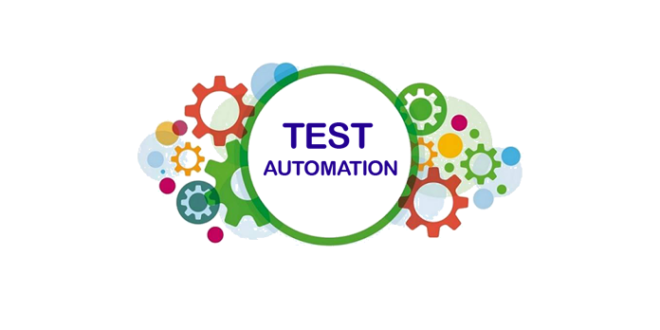The Best Overview to Implementing Automation Testing Effectively
The Best Overview to Implementing Automation Testing Effectively
Blog Article
Guaranteeing Success in Automation Testing: Secret Metrics, Obstacles, and Solutions Every QA Group Should Know
In the world of software quality assurance, the landscape of automation screening is ever-evolving, demanding a meticulous approach to guarantee seamless procedures. The journey to understanding automation screening is led with subtleties that need an eager eye for tracking, evaluation, and continual renovation. As the sector moves ahead, the mission for optimal efficiency in automation screening remains a consistent search, advising QA groups to equip themselves with the knowledge and techniques vital for triumph.
Significance of Key Metrics
Recognizing the relevance of essential metrics is important for evaluating the efficiency and efficiency of automation testing procedures. Key metrics act as quantifiable measures that provide important understandings right into various aspects of the testing procedure, such as test protection, test execution time, defect density, and examination case efficiency. By assessing these metrics, QA groups can identify traffic jams, ineffectiveness, and locations for enhancement within their automation screening framework.
One crucial element of key metrics is their capability to track progress and keep an eye on the overall wellness of the testing process (automation testing). They enable stakeholders to make enlightened decisions based upon data-driven insights, which can result in extra efficient screening strategies and much better source allowance. Additionally, essential metrics can aid teams set realistic goals, gauge the success of automation efforts, and demonstrate the ROI of automation screening efforts

Typical Difficulties Encountered
Challenges typically come across in automation screening processes can substantially affect the general efficiency and performance of QA groups. One of the major difficulties is the option of the ideal test cases for automation. Not all examination cases appropriate for automation, and selecting the wrong ones can bring about lost time and resources. In addition, preserving test manuscripts can be a daunting job, particularly as the application goes through frequent adjustments. Examination manuscript upkeep needs continual updates and alterations to guarantee they reflect the existing performance properly. An additional typical obstacle is the first investment needed for establishing automation frameworks and tools. This can be a barrier for some organizations, specifically smaller ones with restricted budgets. Automation screening may not cover all facets of screening, such as use and customer experience testing, which still require hands-on intervention. Getting over these challenges needs correct planning, critical examination case option, durable upkeep processes, sufficient resources, and a clear understanding of the constraints of automation testing.
Effective Solutions for Obstacles
To deal with the challenges experienced in automation testing, implementing reliable remedies is necessary for improving the effectiveness and productivity of QA teams. One key solution is to invest in robust training programs for QA groups to ensure they have the required skills to effectively make use of automation devices. Training can connect understanding spaces, boost understanding of automation structures, and enhance scripting capabilities, inevitably causing find much more effective examination development and execution.
Another vital solution is to establish clear communication networks within the QA team and with other stakeholders, such as designers and job supervisors. Reliable interaction helps in lining up assumptions, sharing progression updates, and without delay dealing with problems or barricades that may emerge during the automation screening procedure.

Tracking and Analysis Techniques
Implementing efficient tracking and analysis techniques is important for guaranteeing check over here the success and efficiency of automation screening procedures. By using surveillance tools, QA teams can track the performance of examination scripts, determine bottlenecks, and identify locations for enhancement. Real-time monitoring allows for quick detection of concerns, making it possible for rapid action and resolution. Additionally, assessing test outcomes and metrics gives valuable insights right into the high quality of the software program being checked and the efficiency of the testing technique.
One key strategy in tracking and analysis is using control panels that combine relevant metrics and KPIs in a visually obtainable format. These control panels supply an extensive review of test execution condition, test protection, defect patterns, and various other essential info. Frequently reviewing and examining these control panels can help QA teams make informed choices, prioritize tasks, and optimize screening initiatives.
In addition, implementing automated informs and notices based on predefined thresholds can boost aggressive monitoring and timely intervention. By establishing alerts for efficiency deviations or examination failings, teams can deal with concerns without delay and stop them from escalating. Overall, tracking and evaluation strategies play an essential duty in guaranteeing the performance and success of automation screening efforts.
Constant Improvement Strategies
Enhancing the efficacy of automation testing procedures demands the constant refinement of methodologies and strategies. Continual renovation approaches are pivotal for QA teams to adjust to advancing modern technologies and supply top quality software application products. One key method to enhancing automation testing procedures is to perform regular evaluations and retrospectives. By analyzing past screening cycles, teams can recognize traffic jams, ineffectiveness, and areas for improvement. Implementing comments loops and including lessons discovered right into future testing frameworks can yield substantial renovations in time.

Final Thought
Finally, it is crucial for QA teams to recognize the essential metrics, difficulties, and solutions in automation screening to make certain success. By meticulously keeping an eye on and examining data, executing effective solutions to usual obstacles, and constantly enhancing methods, QA teams can optimize their screening procedures and supply high-grade software program products. Abiding by these practices will ultimately lead to much more effective and efficient automation screening practices.
By assessing these metrics, QA groups can recognize bottlenecks, inadequacies, and areas for enhancement within their automation screening structure.
Furthermore, vital metrics can assist groups established reasonable objectives, measure the success of Continued automation efforts, and demonstrate the ROI of automation testing efforts.
Obstacles frequently run into in automation screening processes can significantly impact the total performance and effectiveness of QA teams. Automation screening might not cover all elements of testing, such as use and customer experience testing, which still need manual intervention.In final thought, it is essential for QA groups to understand the essential metrics, obstacles, and options in automation testing to make certain success.
Report this page